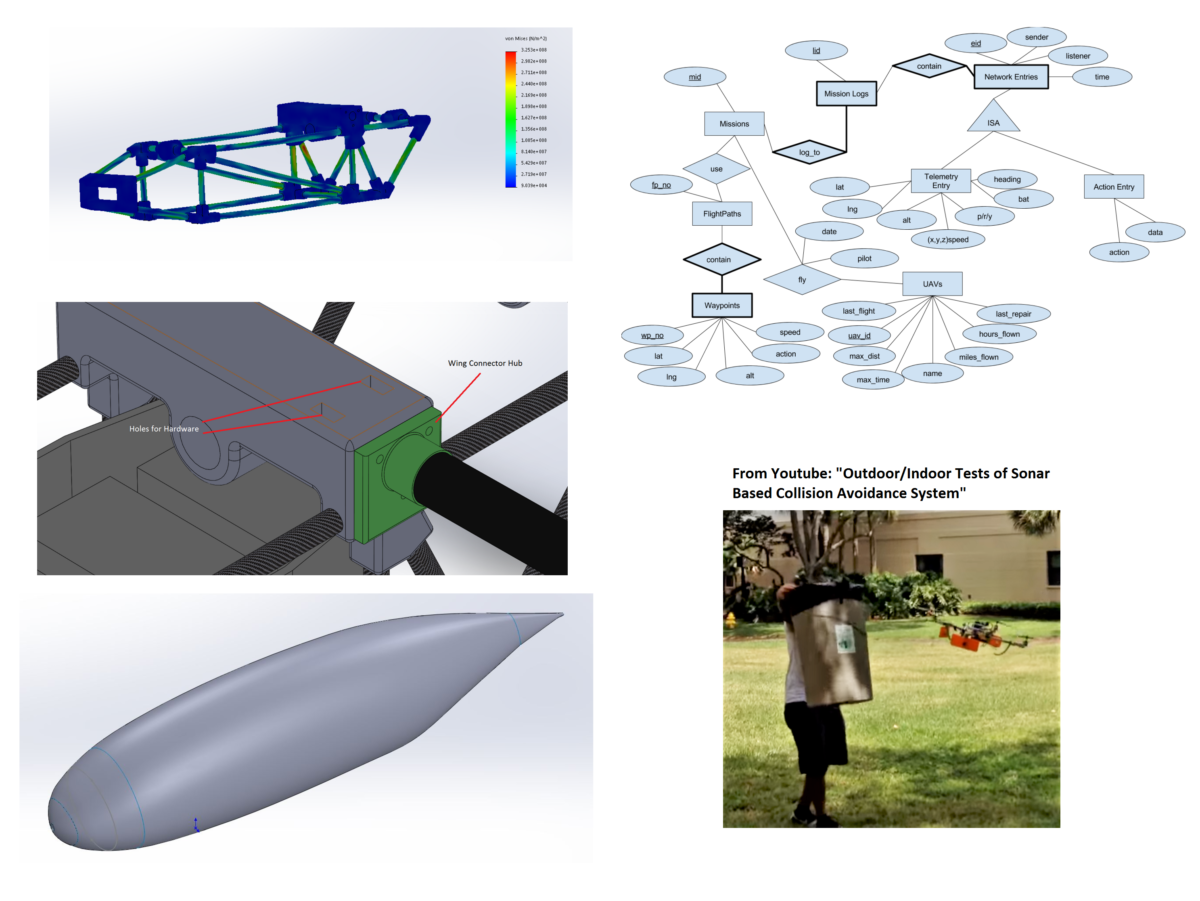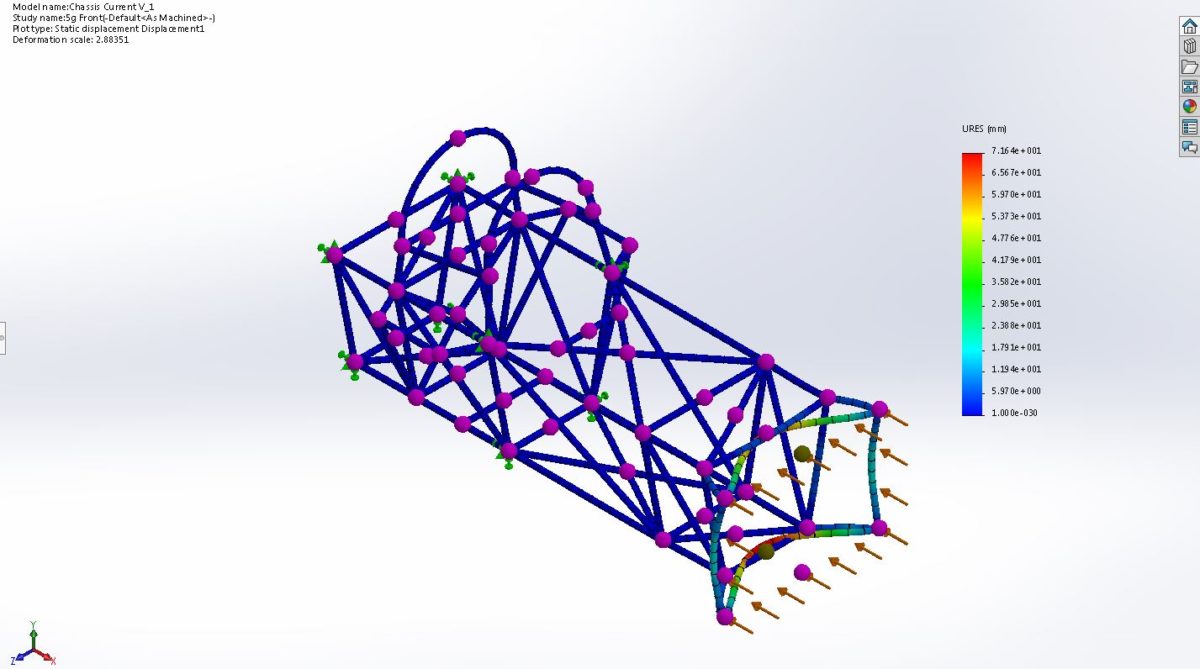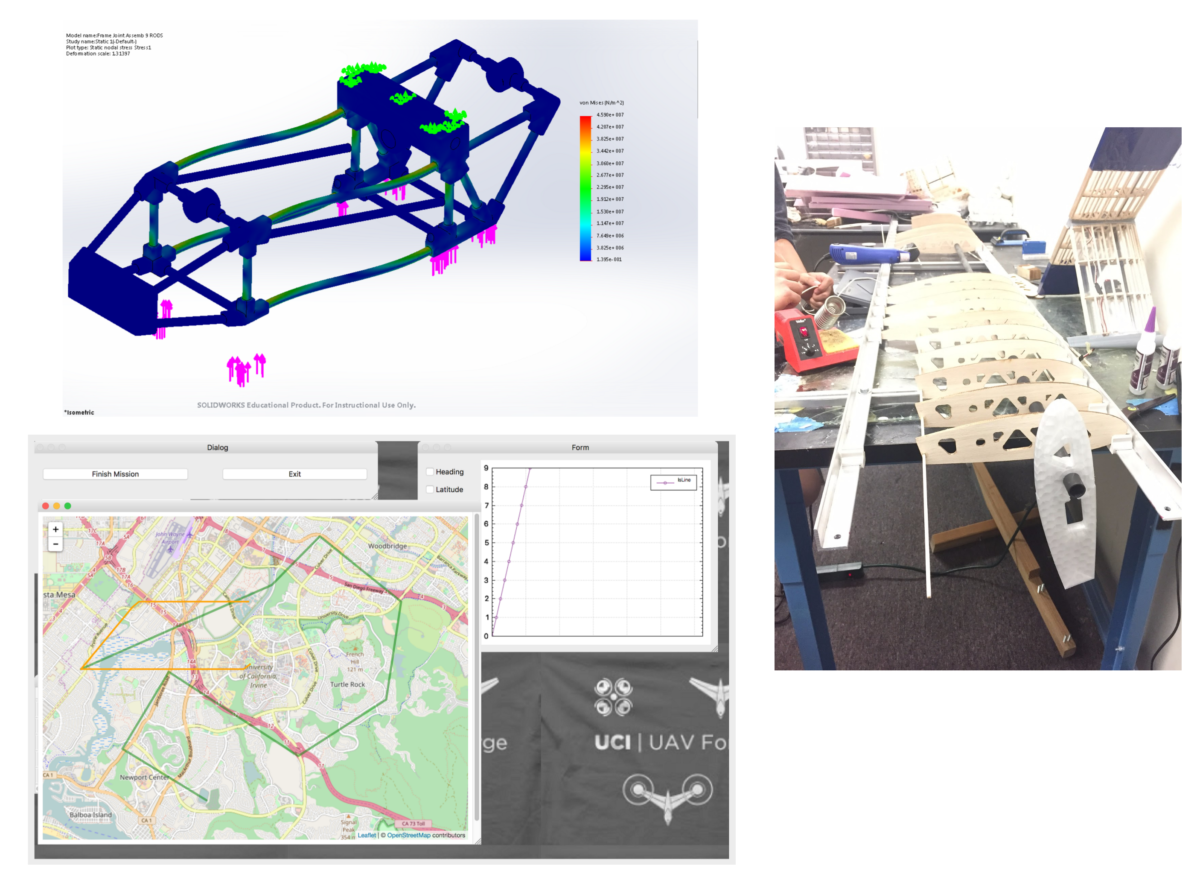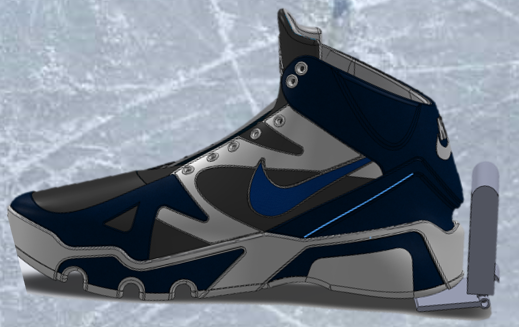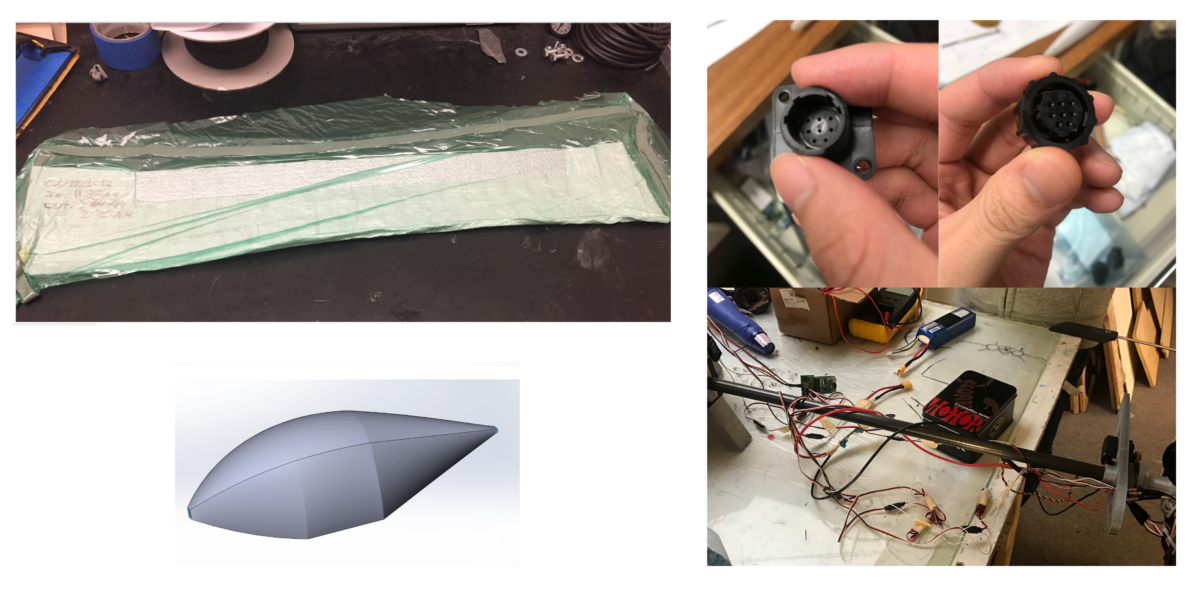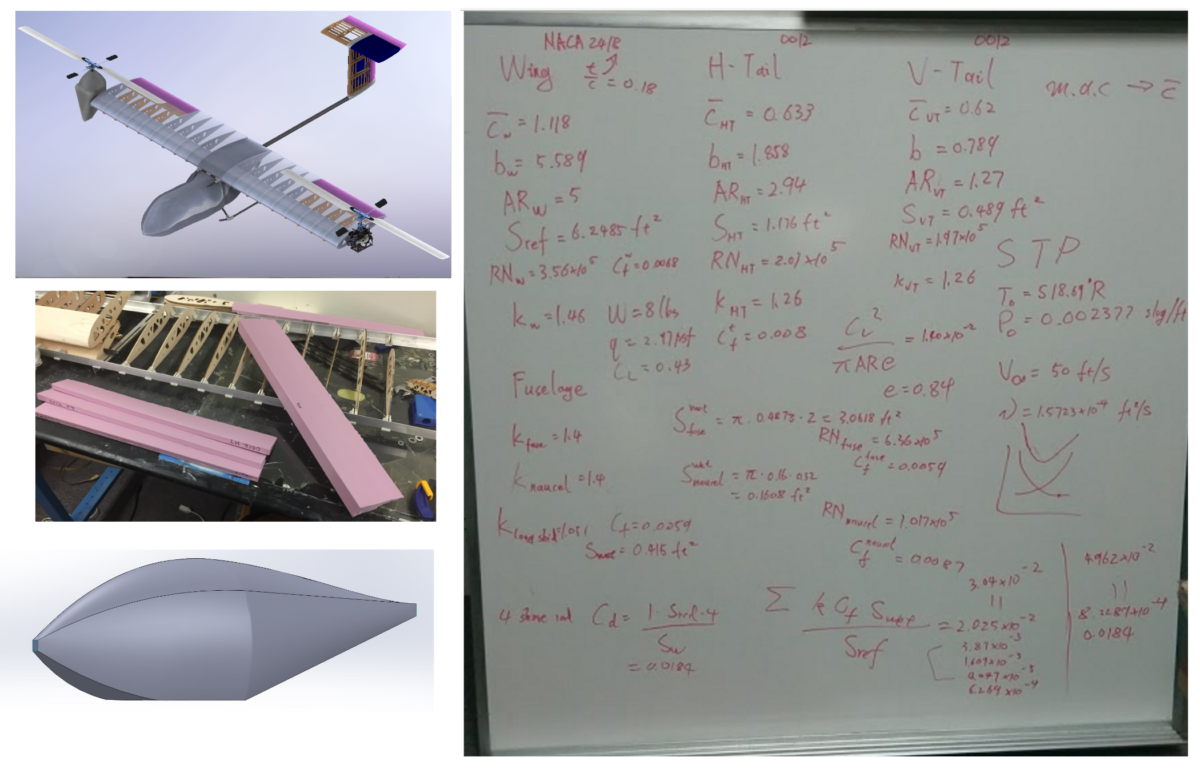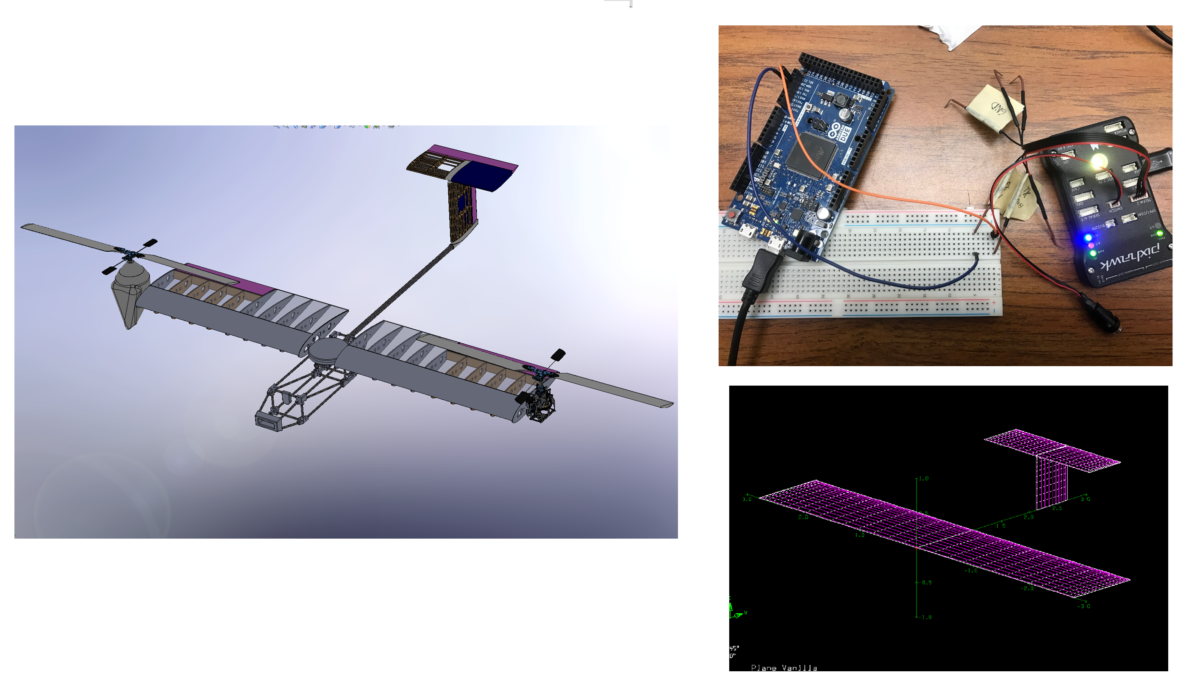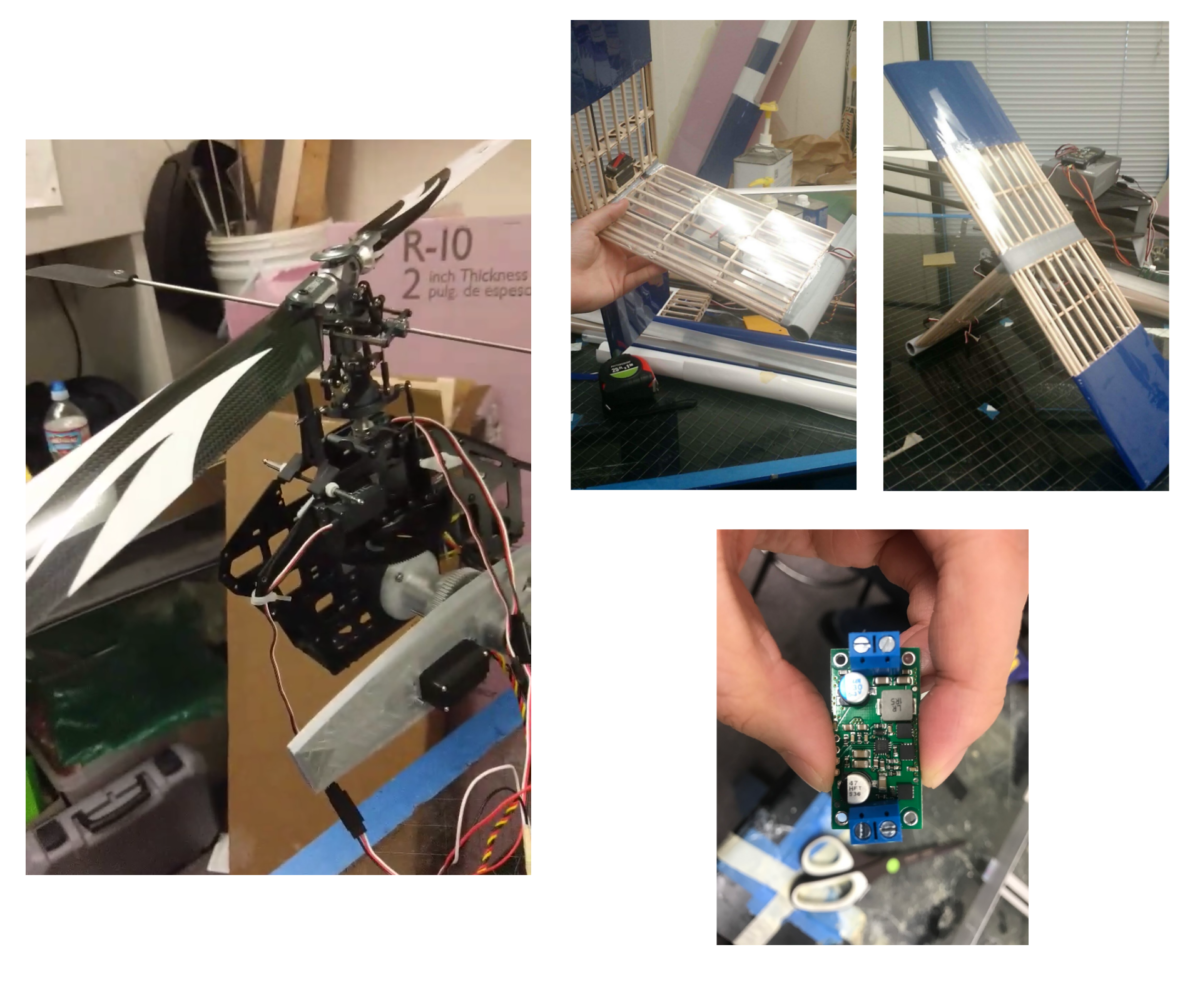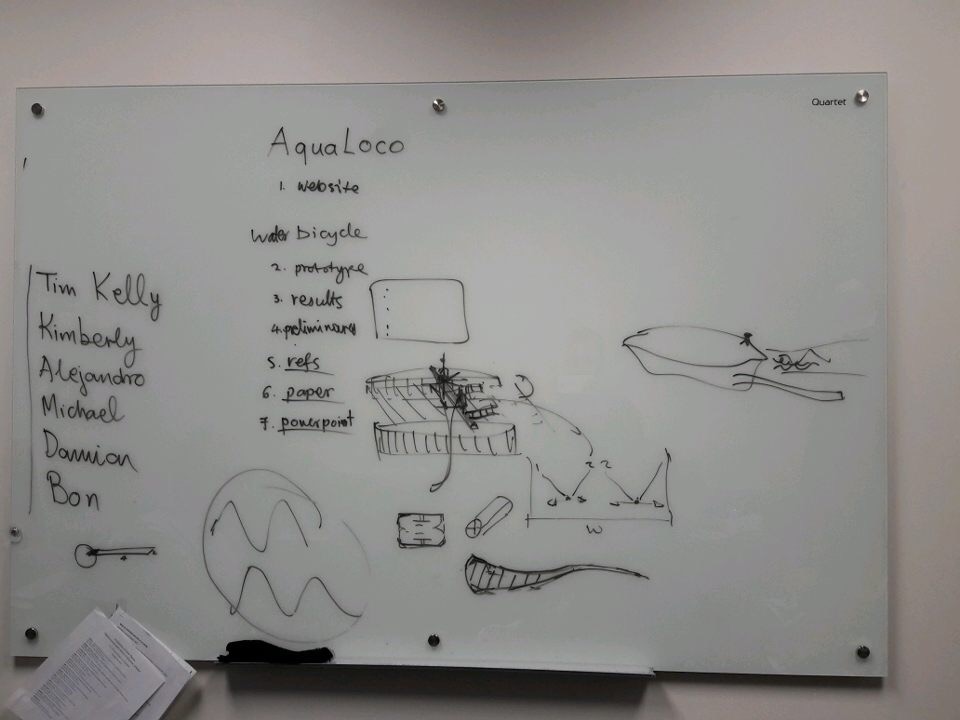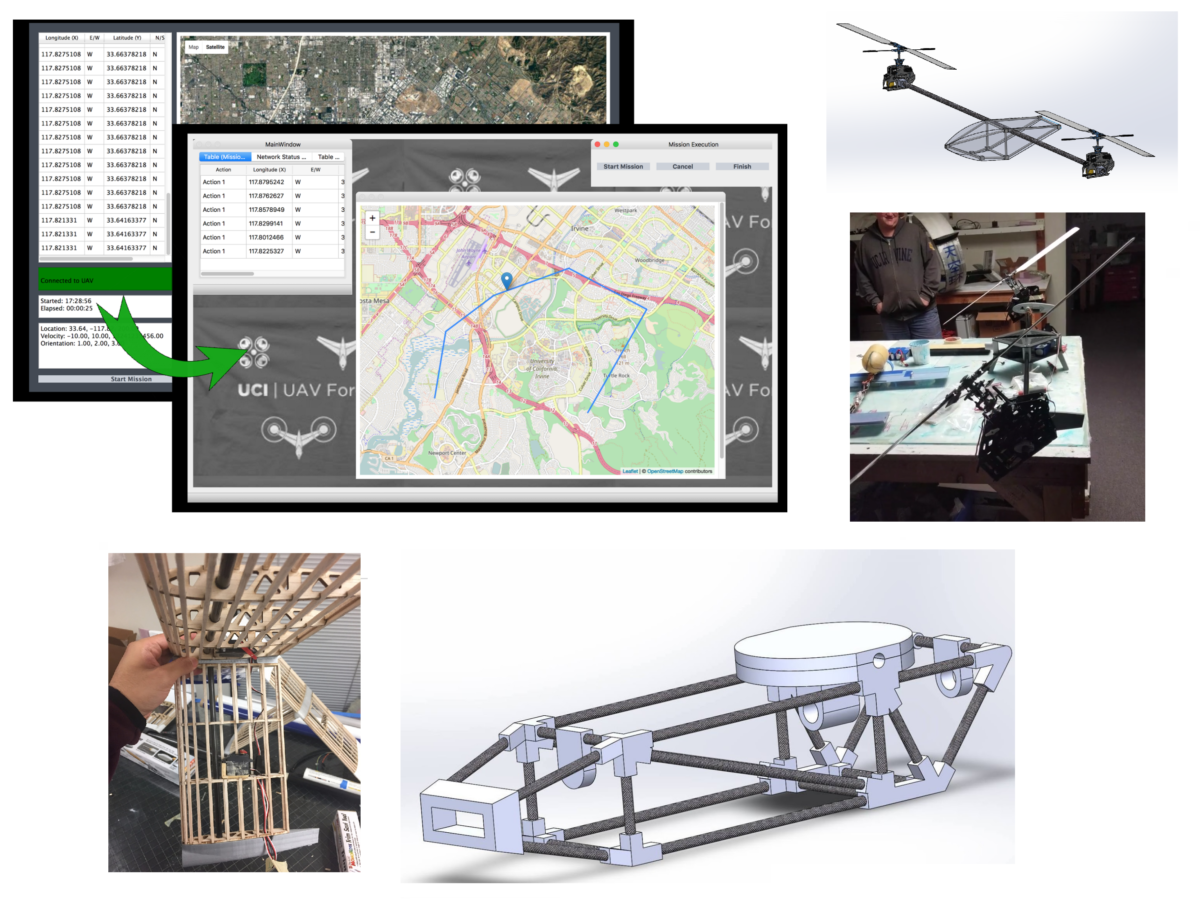The Propulsion team performed their first flight test with the tandem tilt rotor prototype last Saturday. Unfortunately, the test failed and they burnt the 4 servos on left nacelle. They found that the power wires were in the wrong places and too much power was put into the servos. The replacement servos were on back order, so Propulsion ordered different …
Chassis Load Testing
According to regulations, we have to sustain a 5g load in all directions of the chassis. Here are pictures from our latest testing. We are currently experimenting with different pipe sizes to find the best compromise between strength and weight. Our chassis has a mirror feature that we did not anticipate on deviating our results. For the front crash, there …
Winter Week 8: Making Last Improvements
The Propulsion team is still working on mirroring the control signal of the left tilt rotor to the right rotor. The team is also working on the battery cage for the tilt rotor prototype. Mechanical Design has completed one phase of FEA on the plane’s frame. Using a static deformation simulation, they have calculated the frame can withstand a 1000N …
Mechanical Aid for Traction on Ice Week 8 Update
The update from this week is a summary from previous weeks. We are getting to the final step of our prototype. Last week we had a presentation and it went well. This gave us more confidence on our design concept and we will work harder on improving the prototype. An optimal design for the mechanical system has been reviewed by …
Winter Week 6: PixHawk Issues And Solutions
Midterms are still hitting our members at UAV Forge so our progress has been slow. Propulsion team was tackling some issues with in the plane’s stability. The PixHawk controller for the tilt rotors was causing the plane to tilt more extremely than expected. This was fixed by changing the PixHawk’s compensation polarity sign. Another issue was found with the TH-2 …
Winter Week 5: Drag Evaluations and Challenges in Avionics
Propulsion team has calculated the drag coefficients on each of the plane’s components. Using a mathematical model, the drag build up at sea level with a wind velocity (from infinity) of 50 ft/s. The team found that the landing skids produce the most drag compared to the wings, horizontal tail, vertical tail, fuselage, and naucelle. The Parasitic Drag Coefficient tested …
Winter Week 3: Slow Steps to Improvment
This week, UAV Forge has begun working to improve their organization and task-management system. With a progress discussion with the UCI Senior Design Project management, we were motivated to improve our work by addressing the lack structure we have in this project. As they say, you’ll only get what you put in. So we are working hard to accomplish our …
Winter Week 2: Analyzing and Tweaking Components
Propulsion team have successfully got one of the tilt rotors to function with the flight controller by fixing electrical gain and polarity of the set up. They discovered that the autopilot mechanism and the controller operate on opposite polarity, meaning the signals are impeding each other. The team also reworked the joints of the quadcopter prototype to reduce the vibration …
Winter Update
This Winter Quarter we are ready to get the ball rolling and have very exciting updates. During Fall Quarter our team was comprised of only two members. Due to the very limited amount of resources that exists for biomimetic propulsion, a lot of research was conducted on what currently exists and where to begin. Our team created a first draft …
Week 10: End of Quarter Achievements and Future Goals
With final exams chasing our heels, UAV Forge wraps it up for the year. Here are the last tasks the teams have completed and their goals for next quarter. The Propulsion team has nearly completed a prototype structure of the tilt rotor set up. They have confirmed that the tandem software for the tilt rotor controller is working, but the …

